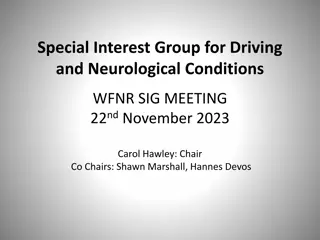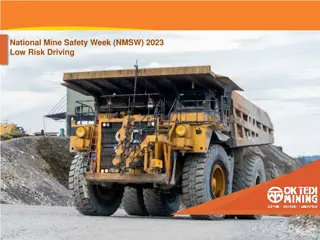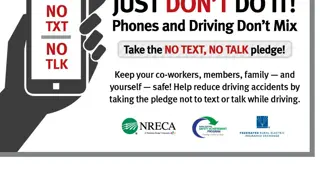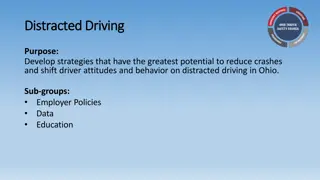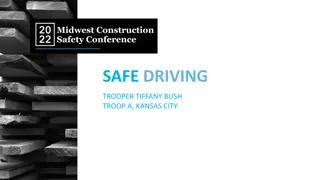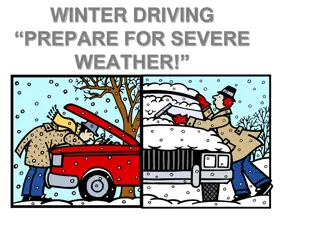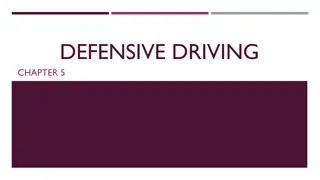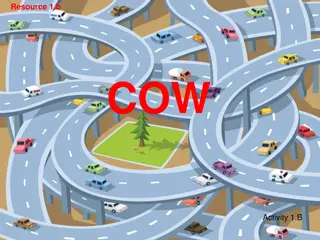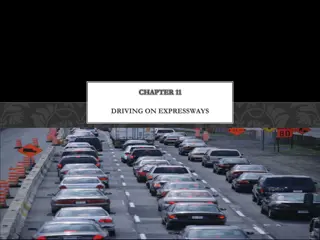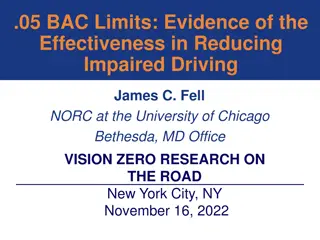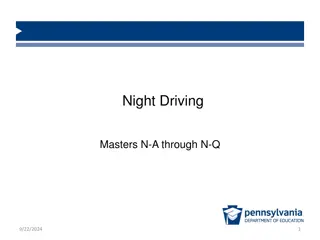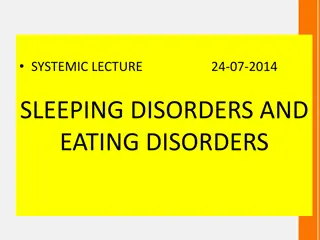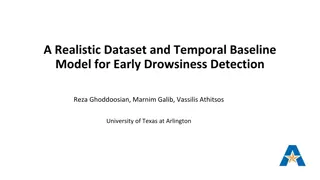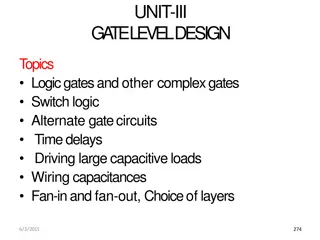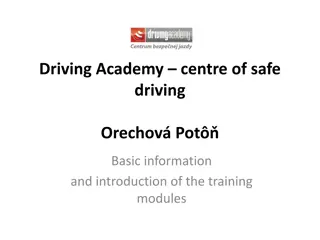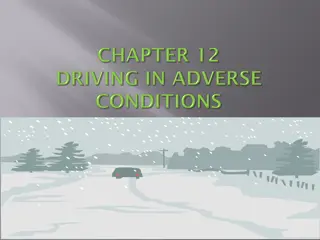Preventing Drowsiness While Driving: Tips and Strategies
Learn about the risks of driving while drowsy and the potential causes behind it. Discover how to identify warning signs of drowsiness and effective measures to combat fatigue while on the road, including the importance of power naps and staying alert. Prioritize road safety by understanding the effects of drowsiness and adopting healthy sleep habits to ensure a safe driving experience.
Download Presentation

Please find below an Image/Link to download the presentation.
The content on the website is provided AS IS for your information and personal use only. It may not be sold, licensed, or shared on other websites without obtaining consent from the author.If you encounter any issues during the download, it is possible that the publisher has removed the file from their server.
You are allowed to download the files provided on this website for personal or commercial use, subject to the condition that they are used lawfully. All files are the property of their respective owners.
The content on the website is provided AS IS for your information and personal use only. It may not be sold, licensed, or shared on other websites without obtaining consent from the author.
E N D
Presentation Transcript
Swiss Council for Hodlerstrasse 5a, 3011 Berne Accident Prevention info@bfu.ch bfu.ch Company, Event, Date Name It s time for a 15-minute power nap
Non-occupational accidents in Switzerland, 2018 437000 573000 82000 Every year, more than one million people are injured on the roads, when doing sport and physical activities as well as in and around the house. 2
Drowsiness at the wheel Around 10 % of serious accidents are caused by overtired drivers. Not only is nodding off at the wheel known as microsleeping dangerous, even the preceding drowsiness and impaired performance can lead to serious accidents. 3
What causes drowsiness at the wheel? Too little sleep or a sleep deficiency lasting days or weeks Driving at night or in the early morning hours when you would normally be sleeping Long waking periods (e.g. after going out in the evening) Too long journeys without rest breaks Irregular sleep patterns (e.g. from shift work) Illnesses that can impair sleep and cause daytime drowsiness: sleep apnea (interrupted breathing during sleep) or depression 4
The effects of driving while drowsy Drowsy drivers: misjudge speed, have poor concentration, react similarly slowly as after drinking alcohol, can nod off in a worst-case scenario (so-called microsleep) 5
Look out for the alarm signals: Burning eyes Heavy eyelids Frequent yawning Blurred vision Dry mouth Being startled for no apparent reason Chills Driving errors 6
If you start to feel drowsy while driving: Stop at the next opportunity and take a 15-minute power nap. Make sure you don t sleep for longer than 30 minutes; waking up after half an hour is difficult. In addition to a power nap, two cups of coffee can provide fast, short-term help against fatigue. Drink it before you fall asleep. The effect kicks in after around 15 minutes. Don t forget: engine off, remove keys from ignition! 7
How to get there safely: Only drive if you are well-rested and healthy. See a doctor if you suffer from sleep apnea or any another sleeping disorder. Do not drive if you know in advance that it s going to be a late night. Make alternative sleeping arrangements or plan to get home by public transport or taxi. 8
How to get there safely: Alcohol exacerbates fatigue. It s best to go without. Medications may also impact your ability to drive especially in combination with alcohol. Be aware: Tricks such as opening a window or turning up the music are virtually ineffective against drowsiness at the wheel. 9
True or false? I make more errors when I m tired. True False Alcohol causes drowsiness. True False Coffee or energy drinks can be used to permanently overcome fatigue. True False Listening to the radio on loud or opening a window help against over-tiredness. True False A power nap is the only effective measure against drowsiness at the wheel. True False 10
Further information Find out more on this topic in our free BFU brochures (available in French, German and Italian): - M digkeit am Steuer Wach ans Ziel (Art.-Nr. 3.013) - M digkeit am Steuer Auch tags ber wach und sicher ankommen (Art.-Nr. 3.133) Order at bestellen.bfu.ch Find even more accident prevention tips at bfu.ch. 12




